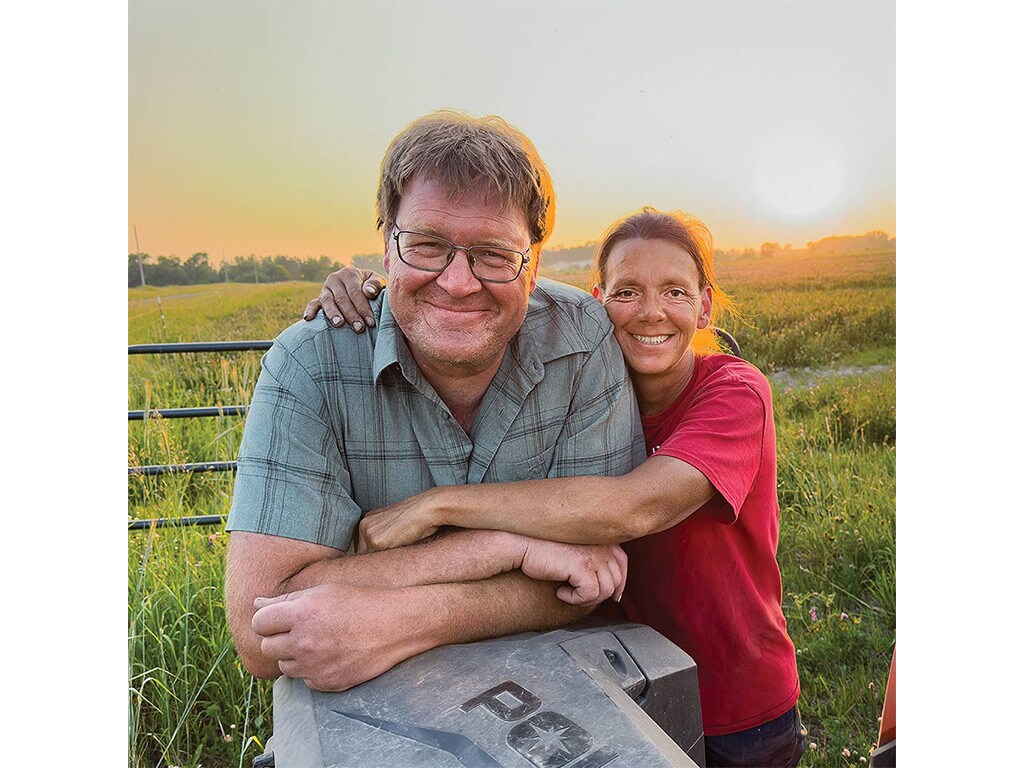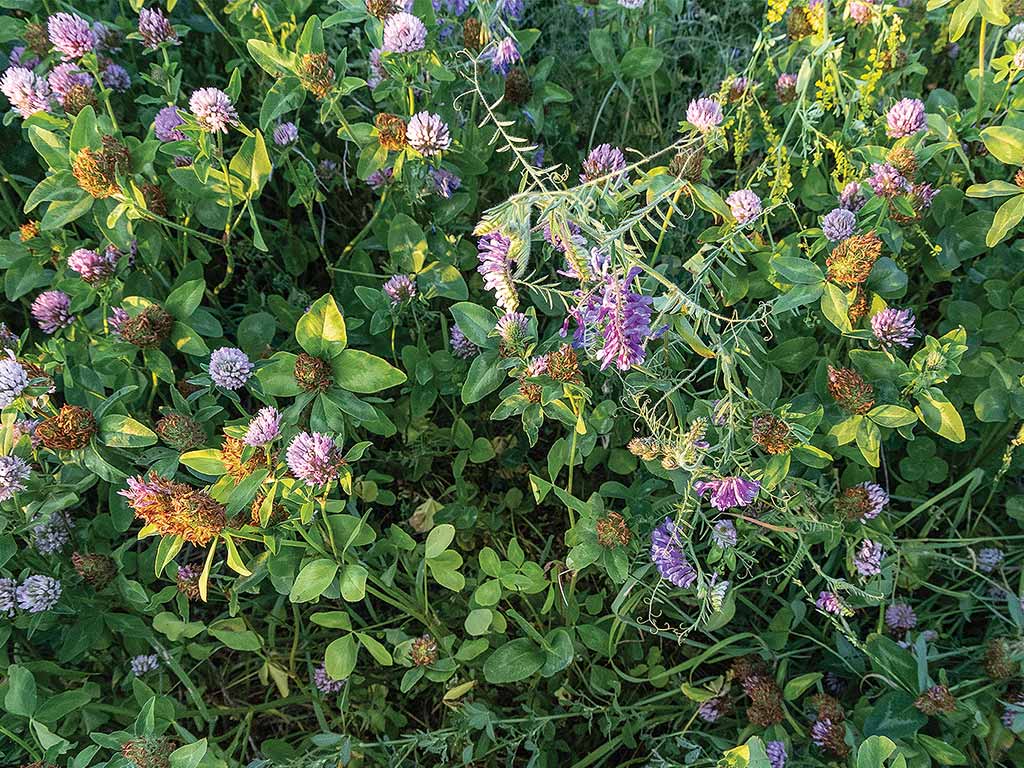
"It seems like I’m in the capital city of 'It won’t work here,'" says Jon Stevens, who farms in east-central Minnesota near Rock Creek. Still, he’s shifted his farm over the past decade to minimum tillage, such as these strip-till soybeans. Yield maps show zero- or low-yielding areas have shifted into higher yielding ones since the shift, he says.
Agriculture, Sustainability January 01, 2024
Meet Mr. Maverick
.
Jon Stevens slays farming myths on this Minnesota farm.
Jon Stevens isn't what you'd call a "go-along, get-along" guy.
Take no-till. It's not supposed to work near Rock Creek in east-central Minnesota, an area filled with hardscrabble soils that a university soils specialist once described as "yuck," says Stevens.
"She told one young farmer who asked what he could do with these soils to stick with tillage," he says.
In 2014, though, rampant rainfall that nixed pre-plant tillage spurred Stevens to no-till soybeans. "It was either no-till or we wouldn't have planted," he says.
That fall, soybeans yielded 48 bushels per acre—a bumper yield back then in this northern region.
"Another fun one is, 'You can't no-till corn on no-till corn up here, and that you have to incorporate manure to gain any value,'" says Stevens.
Wrong.
"In 2015, I no-tilled corn into no-till corn with liquid in-furrow fertilizer and applied manure with a dry box horizontal beater spreader in a test plot," he says. "In July, I should have disked it down to save my embarrassment."
Come fall, though, plot yields tallied 200 bushels per acre.
"In Pine County [where he and wife Carin farm in Minnesota], it wasn't too long ago when the average corn yield was 100 bushels per acre. Row crop production ends 12-13 miles north of our farm. Granted, today's corn genetics are incredible. But I think something else was going on. During those first few years, I thought no-till was the greatest thing since sliced bread and electricity."
This changed starting in 2018, as his soils became dense and lifeless with little structure. So, Stevens regrouped field-by-field on the 700-acre farm. He experimented with cover crops to spur more microbes into his soil.
It's worked. He planted two fields with green fallow cover crops to graze finishing steers.
"It's here where we saw a massive increase in water infiltration with the covers and cattle," he says. "We never saw earthworms in that field before. They helped the soil take in 6 to 7 inches per hour of rainfall. In spring 2019, I could walk in white tennis shoes in that field after a three-inch rain, and there was zero mud. In one spot, there were 20 earth worms per square foot."
Still, cover crops don't always work. "We have had our failures," he says. In one case, planting soybeans "green" into standing cover crop didn't work due to cover crops becoming too large for a herbicide to effectively kill.
Above. Jon and Carin Stevens also run a cow herd on mixes such as hairy vetch, crimson clover, and grasses. Grazing steers on cover and pasture mixes such as these enable them to spend just 25 cents per day on feed costs—a fraction of what a total mix ration with grains would cost them in a feedlot setting, says Jon Stevens.
Strip-till shift. Moving from no-till to strip-till in some fields also helped break compaction in the seed zone while preserving most of no-till's soil-saving attributes. Strip-till only tills a six-inch strip into which Stevens plants crop seed.
"When we put a soil probe in between strip-till rows, it's hard to get it into the soil," he says.
Not so in the strip. "Through the strip, water and air enter the soil," he says.
Concentrating fertilizer to the crop has enabled Stevens to nix commercial phosphorus (K) applications into the strip and instead make foliar ones. It's also enabled him to reduce potassium (P) strip-till applications by 50% to 60% in most fields. Banding fertilizer where needed has also enabled him to slice commercial nitrogen rates by 30%. He also complements commercial fertilizer with cattle manure.
"That was a huge savings per acre, and we saw no negative crop response," he says. "I've seen complaints on social media about the price of P and K. Why not farm in a manner that allows you to be less dependent on commercial P and K in the first place?"
Not just yields. Stevens is selective when considering products purported to boost yields. He uses insecticides as a last resort, and applies no fungicides. He nixes the plethora of biostimulants now flooding the market.
"Yield does not quantify success when considering soil health," he says. "I had one guy on social media tell me that was the stupidest thing to say. But I asked him, 'Would you rather have 150 bushel corn yields that make you $150 per acre, or 200 bushel per acre yields that barely break even?'
"Why not farm in a way that allows water to infiltrate into your soil instead of using tile to flush it away?" he adds. "Rather than say '2 inches' when asked how much rain I got, I someday want to say 'all of it, and it's in my soil!'" ‡
Read More

AGRICULTURE, SUSTAINABILITY
A Sea of Meal
Industry scrambles to develop new markets for canola meal.

AGRICULTURE, FARM OPERATION
Resilience Man
How Ron Rosmann adjusts Rosmann family farms to economic and climate changes.


